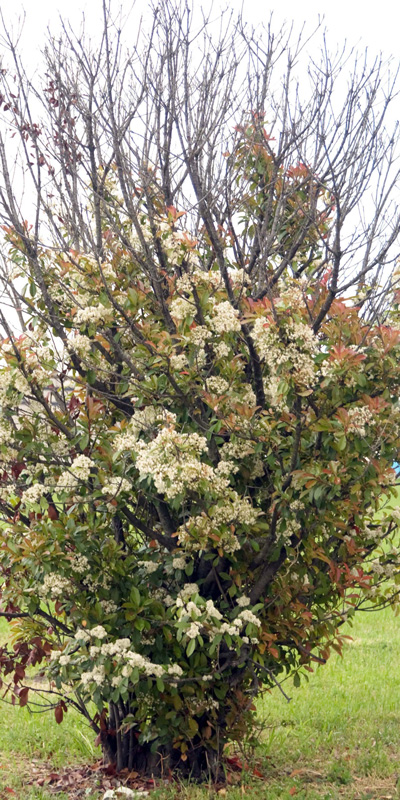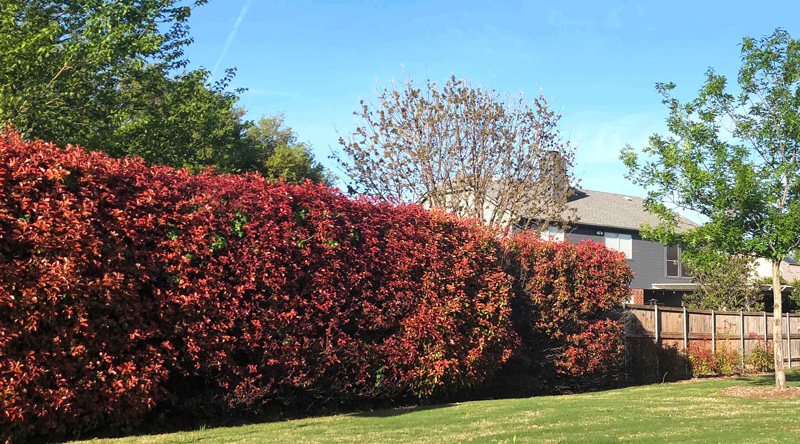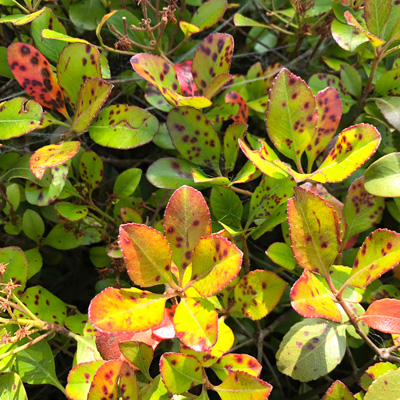Take a “Pass” on Photinias
Spring 2023 looks like it’s going to be another banner year for the fungus we’ve all come to know as “Entomosporium.” (You do know it, don’t you? You need to.)

This is the fatal fungus of our favorite photinias, and it’s been around for 50 years that I know of. However, it only became really epidemic (at least in my memory) 30-35 years ago.
Now, it has reduced redtip photinias to rubble all across the South and Southeast, even up the West Coast. It’s even morphed over to photinias’ close cousin Indian hawthorn, enough so that we’re losing them by the thousands across Texas (those that weren’t killed by the extreme freeze of February 2021).
How Entomosporium progresses…
The first thing you’ll see will be maroon-colored freckles dotting the leaves. They seem harmless enough that first year, but then you begin to notice the leaves losing their color and even puckering as the spots become much more common.

The twigs and even branches die out and eventually entire plants are lost out of long rows.

The temptation when all of that happens is to replace those lost plants with more redtip photinias, but we’ve discovered that that would be folly. New plants soon develop the disease, too, and you’re right back where you started.
And, there is no prevention or cure for this particularly troublesome disease.
Your best replacements for tall, screening shrubs would be Nellie R. Stevens hollies, Needlepoint hollies, Oakland hollies or waxleaf ligustrums.

Note: Entomosporium has mutated and spread to a closely related shrub, Indian hawthorn – enough so that I no longer recommend them for Texas landscaping. The better choice, and the alternative for replacement when you need to, would be Carissa hollies. They have just about the same growth habit and texture and they’re immune to the disease. Unfortunately, growers tell me that Carissas are once again in short supply. If you find them, better grab them.
